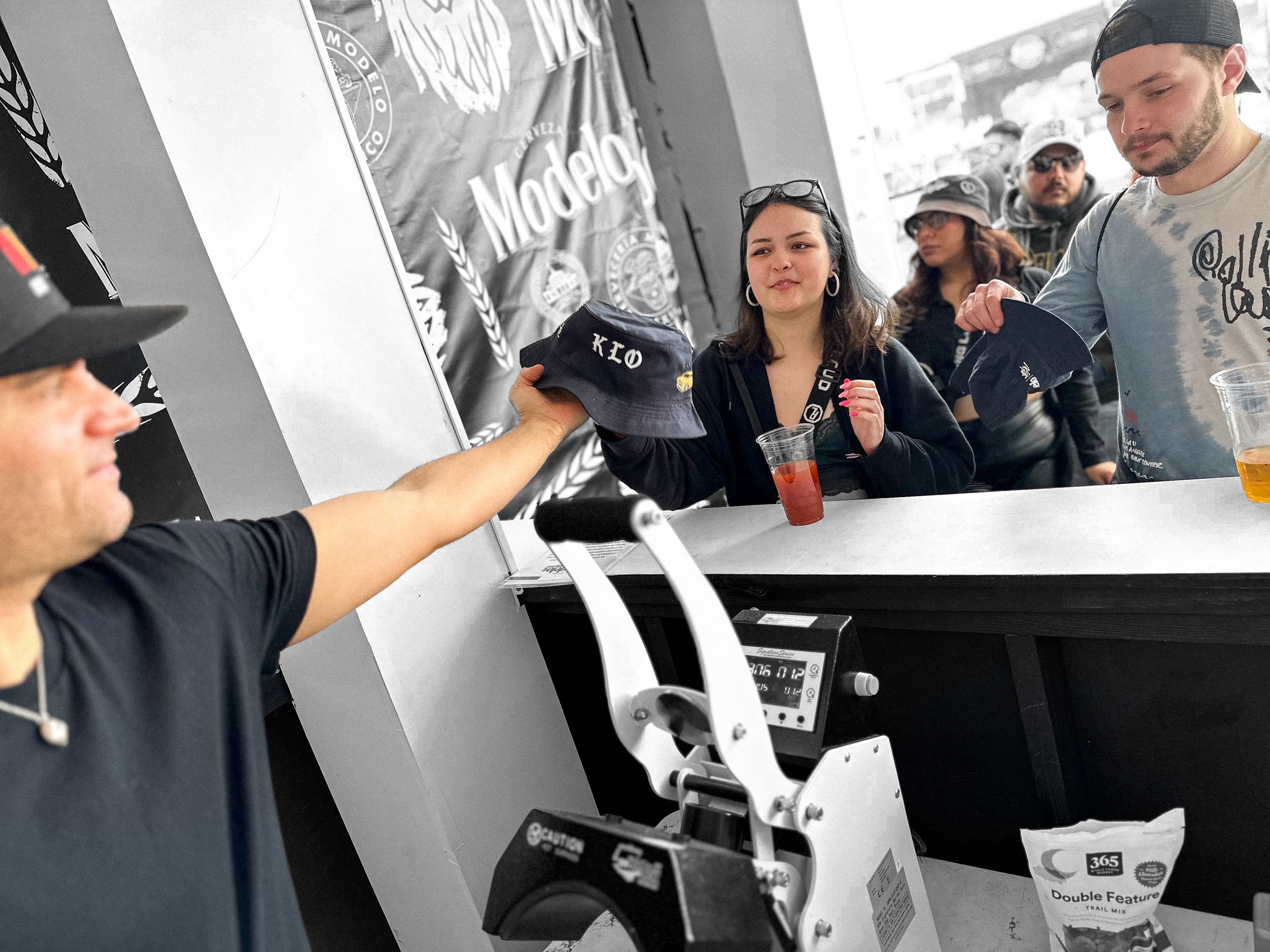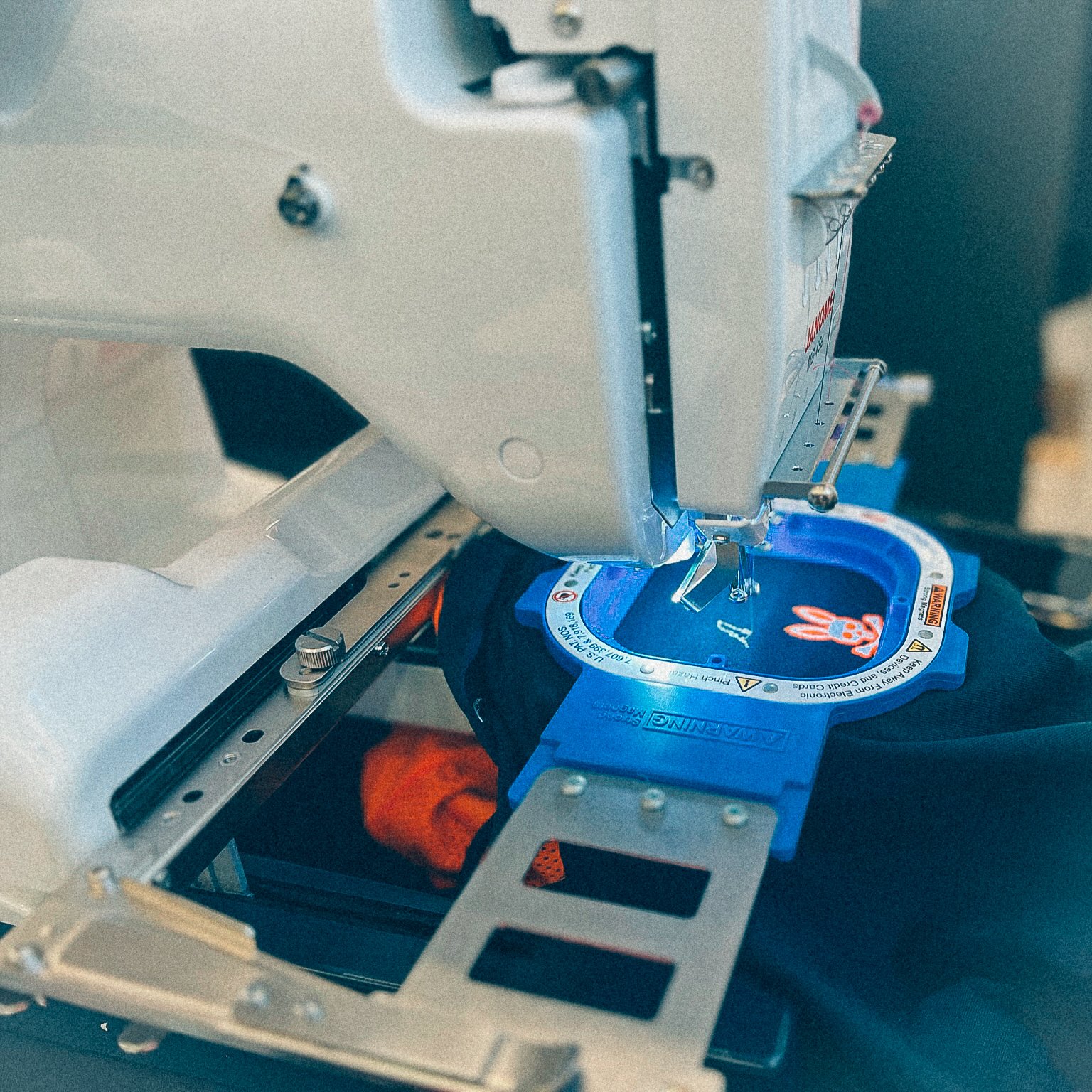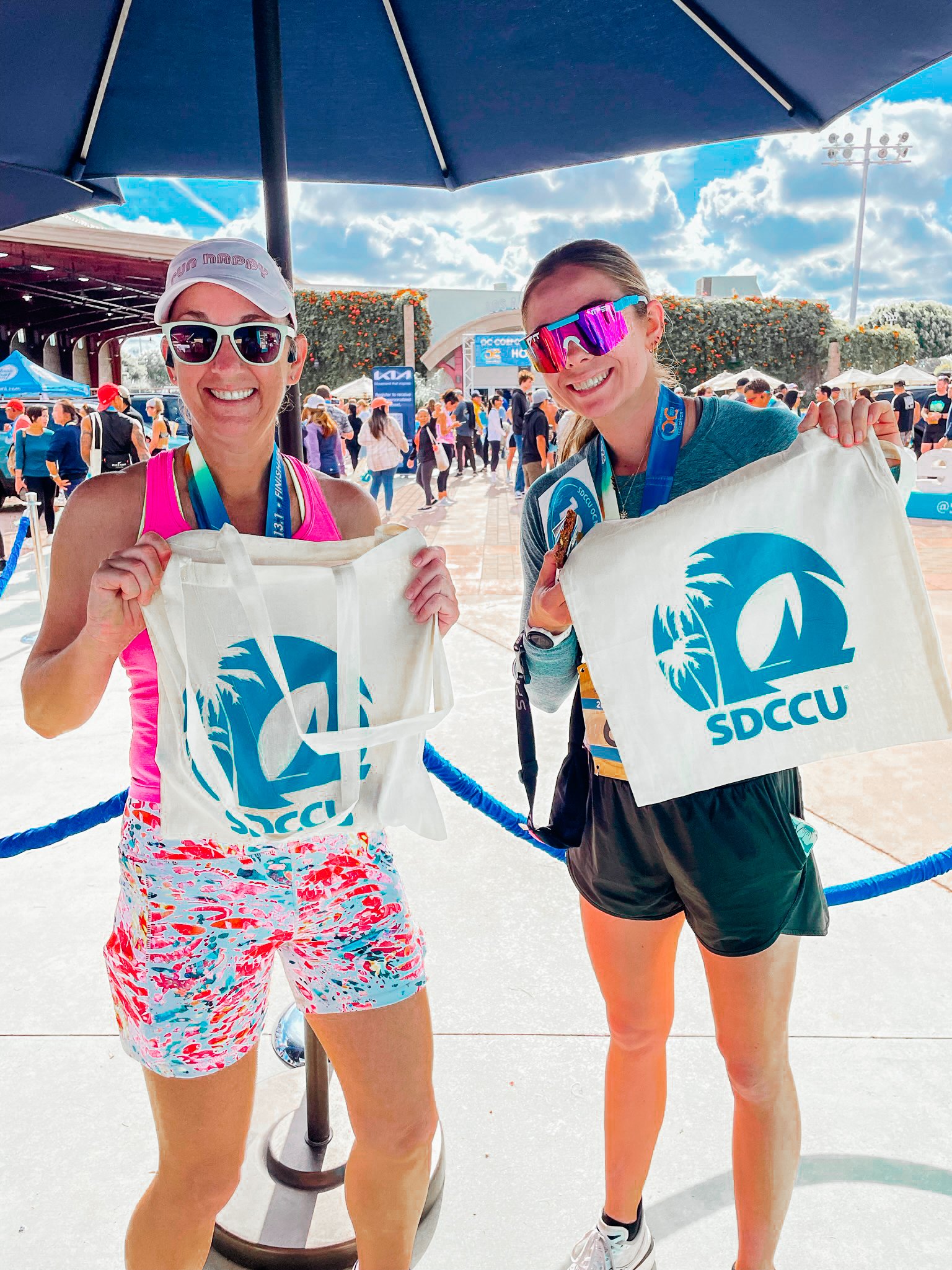Branded merch has emerged as a beacon in the marketing world, offering tangible connections between brands and their audience. From the allure of screen-printed t-shirts to the charm of embroidered hats, these items are more than just promotional tools—they're a celebration of brand identity. Let's dive into the vibrant world of branded merch, celebrating its myriad benefits and the innovative techniques that bring it to life.
Swag and Promotional Merch: A Brand's Best Friend:
The term "swag" is often synonymous with joy, and rightly so when it comes to promotional merch. These delightful giveaways, be it limited edition items or everyday branded treasures, serve as cherished reminders of a brand. They're not just marketing tools; they're gifts that foster goodwill and brand loyalty.
Beyond the immediate joy they bring, swag items also serve as walking billboards, amplifying brand visibility wherever they go. Whether it's a tote bag slung over a shoulder or a branded pen used in a meeting, these items subtly yet effectively keep the brand in the public eye. Moreover, the psychological principle of reciprocity comes into play; people are more likely to engage with a brand that has given them something for free, thereby increasing customer retention rates.
Check Out How promotional merch can turn your customers into brand advocates
Personalized and Embroidered Merch: Touching Hearts:
The era of personalization is here, and brands are embracing it wholeheartedly. Offering embroidered merch or screen-printed t-shirts tailored to individual tastes isn't just a marketing strategy; it's a gesture that says, "We value you." This personal touch elevates the brand experience, making each item a cherished possession.
In a world inundated with generic advertising, personalized merch stands out as a beacon of thoughtfulness. It allows consumers to feel seen and appreciated, which in turn fosters a deeper emotional connection with the brand. This level of engagement is not just beneficial for the consumer but also translates into higher lifetime value for the brand, making the investment in personalization a win-win for both parties.
Band Posters and Unique Merch: Treasures for Fans:
In realms like the entertainment industry, items such as band posters aren't just promotional—they're pieces of history. These unique merch items become keepsakes, creating a bond between fans and artists. The allure of such collectibles can ignite conversations, fostering a community around the brand.
Beyond their aesthetic appeal, these items often become cultural artifacts, capturing the zeitgeist of a particular time and place. They can appreciate in value over time, both emotionally and financially, making them not just a purchase but an investment. The sense of exclusivity and belonging that comes with owning such unique items can turn casual fans into brand ambassadors, amplifying the brand's reach and impact.
The Art of Merch Printing Techniques:
The beauty of branded merch lies in the diverse techniques that bring it to life:
Screen Printing: Ideal for t-shirts and posters, this method offers vibrant colors and intricate designs.
Embroidery: Perfect for caps, jackets, and bags, embroidery adds a touch of luxury and durability.
Sublimation: Used for mugs and coasters, it provides high-definition prints that last.
Laser Engraving: Ideal for metal or wooden items, it offers precision and a touch of sophistication.
Digital Printing: Suitable for various materials, it allows for detailed and vibrant prints.
Each of these techniques has its own set of advantages and limitations, making it crucial for brands to choose wisely based on the product type, material, and desired aesthetic. For instance, screen printing is cost-effective for large batches but may not be suitable for highly detailed designs. On the other hand, digital printing offers high resolution but can be more expensive per unit. Understanding the nuances of these techniques can significantly impact the quality and reception of the branded merch.
The Role of Packaging: First Impressions Count
Packaging is often the first physical touchpoint between the brand and the consumer, and as the saying goes, "You never get a second chance to make a first impression." Thoughtfully designed packaging can enhance the unboxing experience, making it memorable and shareable. Whether it's a reusable bag, a beautifully designed box, or even a personalized thank-you note, these small touches make a big difference. They not only add perceived value to the product but also provide additional branding opportunities, as consumers are likely to share their positive experiences on social media.
Check out Custom Packaging For Your Businesses
Seasonal and Event-Specific Merch: Timely Engagement
Capitalizing on seasons, holidays, or special events can be a smart strategy for branded merch. Limited-edition items that celebrate a particular occasion create a sense of urgency and exclusivity, encouraging consumers to act quickly. These timely offerings can generate buzz and drive short-term sales spikes, all while reinforcing brand relevance. For example, a coffee shop releasing special holiday-themed mugs can not only boost sales but also enhance the festive atmosphere, making the brand a part of consumers' celebrations.
The Psychology of Freebies: The Power of Giveaways
Everyone loves free stuff, but the impact of giveaways goes beyond the initial excitement. Psychologically, receiving a gift can trigger the principle of reciprocity, making people more inclined to give back in some form—be it loyalty, advocacy, or purchases. Brands can leverage this by offering freebies at events, as part of a purchase, or through social media campaigns. The key is to offer items that are useful, high-quality, and, most importantly, aligned with the brand's identity.
Analytics and ROI: Measuring Merch Effectiveness
In the age of data-driven decision-making, it's crucial for brands to measure the effectiveness of their merch strategies. This involves tracking metrics like engagement rates, sales uplift, and customer lifetime value attributed to merch activities. Advanced analytics can even delve into granular details like which items are most popular, seasonal trends, and customer preferences. This data is invaluable for refining future merch strategies, ensuring that efforts are not just creative but also financially rewarding.
Each of these sub-headings adds another layer to the multifaceted world of branded merch, highlighting its potential to be much more than just a promotional tool. From sustainability to analytics, the opportunities for innovation and engagement are vast, offering brands a powerful means to connect, engage, and grow.
The Positive Impact of Branded Merch:
Branded merch is a testament to a brand's commitment to its audience. It's a strategy that goes beyond marketing—it's about building relationships. Offering high-quality items that resonate with the audience not only boosts brand awareness but also fosters trust and loyalty.
The ripple effects of this trust can be monumental. A consumer who trusts a brand is more likely to become a repeat customer, recommend the brand to others, and engage more deeply with its other offerings. This creates a virtuous cycle where the brand gains not just a customer but an advocate, further solidifying its presence in the market and setting it apart from competitors.
Conclusion
Branded merch is a celebration of brand identity, a bridge connecting businesses to hearts worldwide. With a plethora of printing techniques and a focus on quality and personalization, brands can create lasting memories. Embracing branded merch is not just a strategy; it's a journey towards creating brand ambassadors who wear their loyalty with pride.
Follow us on Instagram and Facebook
For FAQ, check out our site!
For any inquiries, send us a message!
OR
send us an e-mail at quotes@familyindustriesla.com























